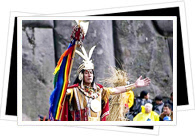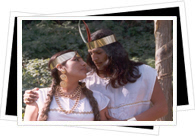Lima, capital of Peru, was founded in 1535 by Pizarro shortly after the country had been conquered.
Pizarro had many buildings constructed, including a theatre and other places where new world citizens could be amused and entertained.

The 14th century saw a stronghold of religious dramas used to educate the Amerindians. The first settlers were quick to observe that the Inca empire practised a lot of drama and theatrics in their Inca religious celebrations and so used the same methods to communicate the religion of Christianity to the Inca people.
The Peru theatre has a history of culture as the early viceroys sent from Spain were of high culture and maintained this in their new country. The aristocrat, Marques de Castell dos Ruis was such a lover of theatrical performances, that he had a room in his Lima palace converted into a private theatre.
The first play shown in the history of Peru's theatre was in 1568, performed in the San Pedro plaza in Lima.
By 1625, Lima had 2 puppet theatres as the entertainment had proved to be increasingly popular since before the turn of the century. Although early settlers had seen the Amerindian's using puppetry and hand masks, it was European puppetry, brought from Spain, which captivated audiences.
Unfortunately for Peru, theatre and half of Lima's population, was wiped out in 1746 when an earthquake struck. The New Coliseum theatre was built and opened in 1749 using the debris.
The next years saw wealth and the tempo of life increase in Peru. Theatre reflected the improving relationship between Peru and Europe and the declining relationship between Peru and Spain.

The famous Inca theatrical story of Ollantay was translated and written in Spanish as early as June 1735. A century later, the story's popularity had had it rewritten by various authors. It is, along with the Rabinal Achí, one of a very few surviving native Amerindian stories.
Theatre took a stronghold and in the 75 years following independence, an estimated 400 different plays by 120 playwrights were performed in Lima alone.
In Peru, theatre really began to develop in the 1940's as theatre started to develop away from the folklore and the foreign plays of before and Peruvian playwrights focused on contemporary Peruvian issues.
The 1970's saw many new playwrights and directors emerge in Peru's theatre scene and the following decade saw Peru theatres full of quality productions. By the end of the 20th century, the Peru theatre season would see over 100 plays acted and small government subsidies available for a selection of the different theatre groups.
The main theatre in Lima nowadays is the Municipal Theatre. Most of the city's theatres are in the Barranco area and performances range from modern and experimental theatre to dance, music and children's theatre.